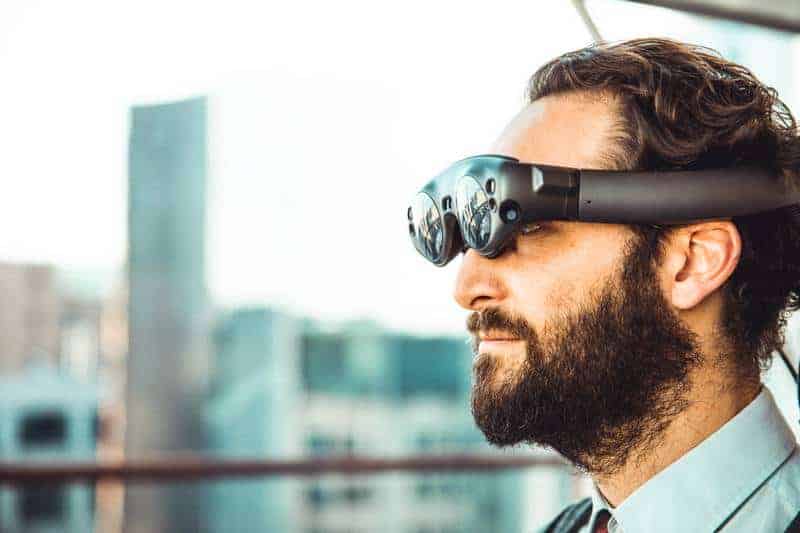Augmented reality is not a well-known concept as virtual reality. This technology has an incredible variety of exciting applications. Yet, most significant commercial projects didn’t see as much success as expected.
These attempts showed that augmented reality is not refined enough to push it into the masses. However, niche application in various science fields has been and still is an option for investors and users.
Having an interactive reference superimposed on the real-world layer is a useful tool. It can be used in fields like biology and engineering, among others. This will undoubtedly help students grasp the subject better. Simultaneously, it is a great way to assist professionals in their daily routines.
The niche nature of the tasks will make it easier to develop the software and hardware. This is relevant for minimizing the risk of mishaps caused by unexpected occasions.
This is precisely why science is currently the main playing field for AR innovators. Once the fundamentals are nailed down, it will be much easier to pursue commercial fields. Although there have been some successful attempts of that already.

Below you will find the top three ways of AR application in education. And here are some useful assignment writing services – https://legitimateessaywriting.com/
Augmented Assistant
In-depth studying requires a lot of additional reference material as well as specialised software. Such tools are so common and seamlessly integrated into the learning process that we barely even notice them.
Most are readily available on conventional pocket devices. However, smoothing the transition between the learning subject and software can seriously enhance the student’s experience.
In simple tasks such as writing, available assistance aid can vary from basic grammar correction to professional academic help from specialists from EssayPro. These are the most common students’ online search requests.
In a broader scope, markerless scanning can be applied to a wide variety of subjects, allowing for the creation of an entire complex of interactive learning material.
Interactive Surroundings
One of the most obvious and exciting applications is being able to project and work with interactive models of surrounding real-world objects.
This concept is familiar to the public as it was introduced via movies and books a long time ago. And the way it is portrayed there is not far from what is expected from this technology. More importantly, some bold ideas have already come true.
Several types of devices are used in tandem with augmented reality technology. These can be divided into three groups:
- Mobile devices;
- Stationary units;
- Head-mounted devices
The most common type is mobile devices. It has seen the most excellent exposure to the public and had some successful commercial projects due to its accessibility and extensive use.
Due to these factors, mobile devices are the most likely choice when it comes to choosing a platform to implement AR in the studying process.
Stationary units are used for specific tasks and are a suitable option for the medical field. It can be used effectively by students for practical lessons as well as professionals such as diagnosticians and surgeons.
In any case, this option is a little bit too bulky to be commonly used outside of niche fields and large offices.
Head-mounted devices are the least developed piece of hardware for augmented reality. Their design implies prolonged use and near-constant engagement with the AR interface.
However, the imperfections of tracking and superimposing make it the least viable option out of all three. But once that problem is solved headsets will grow in viability.
A Step Up
Last but not least, the active development of AR technology gives software and hardware developers an enormous field for growth and experimentation.
IT students are reaping the most of it. The countless ways of improving and applying augmented reality provide an opportunity for extensive academic research as well.
This relatively young technology can also house some profitable projects. A good concept in combination with a start-up model evens the playing field for student start-up companies and huge corporations.
Such a window will most likely remain open for years to come. This can encourage students to contribute to their country’s economy and academics actively.
Some of the projects have already achieved success. Educational models with open access allow for constant learning and adjustment. These early works will become the cornerstone of the augmented reality technology.

In Conclusion
Augmented reality has tremendous potential and a wide variety of handy applications. Still, many problems have to be solved before it can be used by the general public.
Intensive research in this field, as well as significant public interest, draw the needed resources to this sphere. We can expect to see the results of such cooperation throughout the next decade.
The main problem now is the synchronization of the virtual interface with the real world. An image that is not anchored concerning the real-world object strains the eyes.
It can cause severe dizziness and nausea, as well as a result of long-term sight damage in severe cases. Trial and error is the way to sort this issue out but it is likely to take some time before the technology is perfected.
Another problem that augmented reality presented when introduced into the real world is its invasiveness. Users that have been engaging in the prolonged use of virtual reality get used to its ‘augmented’ part.
This can lead to trouble with appropriate reactions when it comes to differentiating between the real world and the virtual one. Both prospects and risks are high, and only time will tell the future of widespread AR rise in any field, including education.





